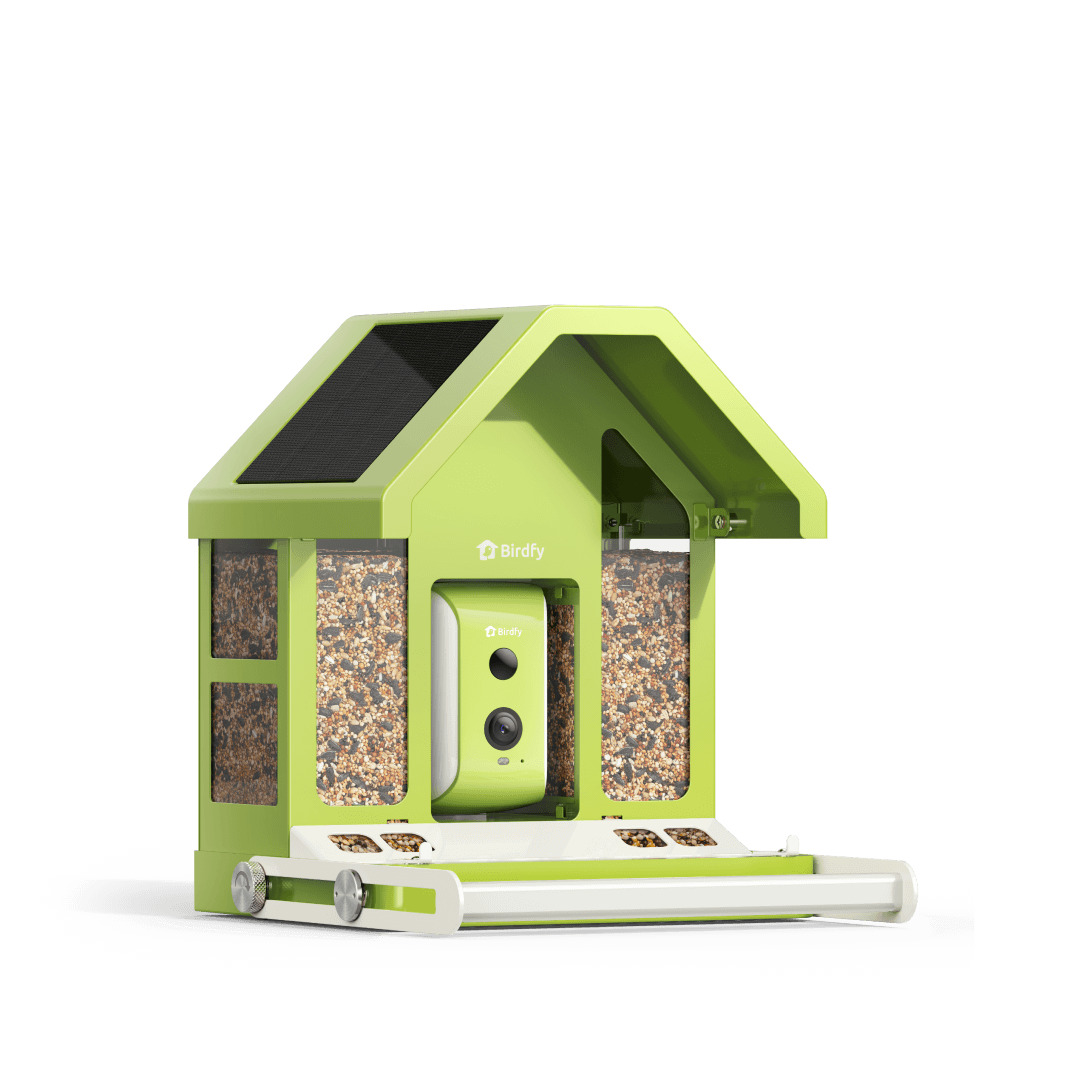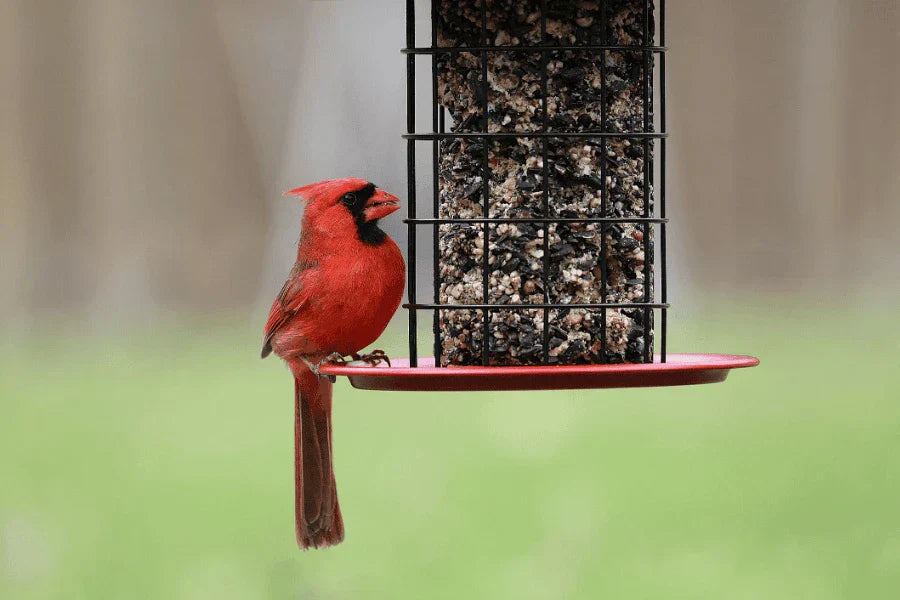12 Fun Facts About Gray Jays- Canada Jays
Introduction
Canada or Gray Jays are colorful birds that would be easy to photograph in the wild. These temperate-loving and cute birds inhabit mainly forests and woodlands of Canada and some other states in the USA. Usually, they are distinct due to peculiar tendencies, appearances, and their reaction towards people. And, here are a few interesting facts about gray jays that any bird enthusiast will appreciate!
Of course, those who like birds, nature, or animals will enjoy watching these species. You once caught a stunning video of them that a friend posted on social media. These videos can make you realize how adorable and sentimental the Canada Jay is in statutes. The unique qualities and widespread range of the Canada Jay include their beauty and the friendliness and adorable nature of the species. Continue reading to learn more about them.

Description And Distribution
Gray Jays are medium-sized birds in the crow family. They are usually found in forests, from the Canadian forests to some parts of the northern United States. They can also be seen in Alaska. Gray Jays are a great example of birds that can survive in various climates and geographical conditions.
Size, Length, And Weight
The size (length and weight) of the Canada Jay is one factor contributing to its uniqueness. It can reach 30 centimeters in length and weigh between 60 and 70 grams. This allows them to fly quickly within the forest yet be big enough to be easily observed.
Key Physical Traits
Canada Jays have some relative characteristics, for instance, feather-covered nostrils and a short black beak. These assist them in maintaining heat during winter and looking for something to feed on in the snow. The feathers on the counter cover their nostrils to shield them from the cold inflow of air. They have a short, black bill, ideal for hunting for food, such as berries and insects.
Range Of Distribution
It is distributed across Canadian provinces, parts of northern U.S. states, and Alaska. It prefers freezing environments and dense woods because food and bonafide shelters are abundant there. It can live in snowy areas—perfectly adapted to such a climate.
Regional Variations
Although the Gray Jay is roughly similar throughout its geographic range, some morphological differences reflect the avian’s domicile. These differences make each group of birds a little distinctive!
Color Variations In Canada Jays
The color variations in Canada Jays across different regions show how these birds change depending on where they live. This is especially true of sites located in the cold areas. They may have dark feathers, especially in dense snow and trees. As for others, maybe their feathers would be less colored or have less of a tinge of color.
Color Differences In Jays From Different Regions
There are also differences in color between jays from northeastern, Rocky Mountain, and western Canada. Typically, birds found in various regions of Canada might slightly differ in color, mainly in gray and white. Minor differences between the two groups of these birds make every group of Gray Jays unique.
Color Characteristics Of Juvenile Jays
The Canada Jays that are still practicing in the nests, called juveniles, are different from the fully grown-up birds. Color characteristics of juvenile jays, known for their distinct black appearance, make them easy to see. The young ones have different-colored plumage, but it is lighter than the mature birds and resembles them.
Habitat
Gray Jays prefer to reside in specific environments. They are fond of forests and the company of humans, particularly campers and hunters.

Preferred Habitats
Habitats include preferred habitats, including coniferous forests, mixed woodlands, swamps, and campsites. They like being in familiar surroundings, with many trees, but mostly in colder climates. Being so, they offer them the shelter they require and a lot of food to look for.
Territory Range
Every single individual of the Gray Jay is said to have its territory. The territory range of Canada Jays is between 150-175 optimum acres of land or approximately 65-70 hectares of ground. They defend their territory and ensure they find enough food to suit them in winter.
Preference For Evergreen Trees
Gray Jays especially love their preference for evergreen trees, particularly spruces. Such trees help them stay warm and secure. There is every green tree all year round, and the birds do not let them shift from one tree to the other even when winter comes because they are all covered with leaves.
Diet And Foraging Habits
The Gray Jays are extremely intelligent when it comes to feeding. They often search for the next meal and eat practically anything they can find.
Diverse Diet
These birds feed on berries, mushrooms, insects, bird eggs, small animals, and even leftovers from our tables! They are not discriminating and will eat anything that comes their way. Their diet is also essential because it assists them in finding food during the winter months.
Foraging Habits
Modern Canadian jays know how to hunt well. Such as observing from mid-level branches to locate food on the ground. They often fly to that area and then swoop to pick meals. It remains excellent at detecting food hidden in the forest.
Human Interactions
They are relatively tame and inquisitive birds. Sometimes, there is interaction with humans, often showing curiosity toward campers, hunters, and visitors. There is a story that if there is a Gray Jay, it will approach you, almost begging for food if you are out in the woods! It is friendly with humans and not shy of getting close.
Food Storage Behavior
They are intelligent characters known to cache food for later days, maybe weeks. This is particularly so when the cold begins, and the food stockpile’s supplies run low.

Methods Of Food Storage
A primary method by which Gray Jays can persist is through caching. They extract food from the forests and store it in their homes as reserves during the cold season. Methods of food storage, including fall preparation for winter, support their meal plan well and well-fed during winter. Their rods are considered food hoarding sites since it is difficult for other birds to come across.
To ensure that the food does not move or slip, the Canada Jay employs the use of sticky saliva to secure food in bark or under moss. Some fruits remain stuck to the bark or hidden beneath the moss because of the bird’s saliva. This is a brilliant way to safeguard their foods from pickpockets.
These birds can hold large amounts of stored food (thousands of items), dispersed to prevent loss. They will stash food in many varied places and then live in fear that they will never find anything to eat later on. They disperse their food to ensure that they will have enough food to take them through the winter seasons.
Nesting And Reproduction
They are very responsible when it comes to breeding! It is the sole responsibility of the hen to take care of the nest and ensure their babies are safe and healthy.
Nesting Locations And Materials
They make their nests in unique places. They usually make their homes in nesting locations and materials, often in south-facing spots to capture warmth. This helps their eggs warm, especially in the cold areas where they are found. They employ twigs, moss, and feathers to make a comfortable nest for the young ones.
Early Nesting Season
Some of the characteristics of Canadian jays include the fact that they are some of the first to lay eggs in time for spring. They begin nesting early nesting season, sometimes as early as February. That way, they will have given their babies enough time to grow healthy before the cold onset returns.
Advantages Of Early Hatching
The fact that these birds hatch their eggs early is a bonus to the baby birds. The advantages of early hatching, allowing young birds to learn foraging and food storage early, assist them in astringent circumstances as they mature. They know essential skills such as how to look for food and ways of storing it in a given environment, which will be especially useful when they are in the wilderness.
Origin Of Various Names
People call them by different names, describing their behavior or how others perceive them. The names of products and celebrities cited here are of hybrid origin and are quite informative to study.
Origins Of Different Names
One of the most common names for this bird is "Canada Jay." This name points directly to geography since this bird is numerous in many provinces of Canada. These birds are nicknamed ‘Meat Birds’ because they are notorious for stealing from people riding or barbequing outdoors, especially meat.
Another funny name for them is ‘Camp Robber’ because they trail around the campers and attempt to ‘rob’ them of food if the campers are not watching. For example, "Whiskey Jack" comes from Indigenous languages, meaning "playful, mischievous spirit." The bird is mischievous and exploratory, so this name is more than suitable. The creatures do not hesitate to peck at people, expecting food or a scavenged piece of leftovers.
World's Longest Bird Research Project
One of the world's most extensive bird-focused research projects has focused on the Canada Jay. This project enables scientists to expand their knowledge of these birds and participate in their natural existence. The long-term study is thus carried out in a particular area in Canada.
Researchers within the Algonquin Provincial Park have been interested for many long years, like the Canada Jays. Algonquin Provincial Park has thus provided a good opportunity for long-term Canada Jay study in Algonquin Provincial Park. This probing behavior in the movement and actions, not to mention the families of these birds, has unveiled surprising truths about the Canada Jay.

Research Methods
In this case, these unique methods are applied to obtain more information about the Canada Jay and research methods, such as color-banding individuals to track lifespan and territory. The researchers place small colored bands on the birds’ legs to track specific birds in the process. This helps them determine the age of the bird they call home and the length of time they remain there. Thus, year after year, scientists can discover how these birds live in the desert.
Findings
One of the most thrilling discoveries, insights into jay territoriality and loyalty to long-term breeding sites, is where Canada Jays nest. These creatures are very defensive of their nests and will even use the same nesting centers season after season. They also stay within their home range—even in winter, which is fascinating because many birds migrate when it gets cold. The study indicates that the species are family-oriented and have specific allegiance to the nesting grounds.
Lifespan
The Canada Jays at the top of this list are among the longest-living birds in their particular environment. They can survive freezing winters and have a long lifespan, so they adapt to their habitats. Their long lifespan proves to people how amazing they are and how much they are willing to survive.
Longevity Of Canada Jays
Another peculiar aspect of this bird is that it may live for several years. The longevity of Canada Jays, often surviving more than 8 years in harsh Canadian winters, with the oldest recorded at 17 years, shows how tough they are. That is why it is often hard to inhabit such regions, but these birds have developed some ways to withstand cold and search for food.
Non-Migratory Behavior
Interestingly, unlike most other birds, Canada Jays are known to be non-migratory. This means they do not move from one place to another at different times but live in one area throughout the year. Their non-migratory behavior allows them to remain and thrive in their home range and survive even during the worst winter conditions. They are very fit to endure harsh winters, and their method of storing food is always perfect, especially when there is a shortage of food for some months.
Incredible Memory
It is said that Canadian jays are intelligent birds with excellent memories. Their brains assist the food storage process and enable them to locate food the next time, even if snow is on the ground. Their brains are unique since they can recall where they buried their food, sometimes half a year after they did that!
Excellent Memory To Hide And Find Food
The Canada Jays have an incredible memory, especially regarding the feeding habits of the food they store during the fall. They will store tens of thousands of morsels of food in hundreds of various locations but under moss or bark to help get them when the ground is snow-covered. This is how they managed to remember where they had stored their food to enable them to survive the harsh winter periods. This information is one of their assets, and it is clear how bright these birds are from this memory.
Unique Social Behavior
They are not solitary birds by any means. These birds prefer the company of their kind and are occasionally in contact with people. This makes them quite entertaining to observe and conspicuous when trekking in the wild in a tent.
Social Birds Enjoying the Company Of Other Jays
They are not lonely birds. Like other jays, they are friendly and group together both in searching for their meals and defending their area. This improves their lives in the wild since they can help each other out in areas such as locating food more efficiently and even alert each other to the presence of a predator. They are also social birds that move in groups; hence, they can easily be sighted by those interested in birding.
Incredible Adaptability
It is fascinating to see how these species change depending on their surroundings. They can live in forests, camps, and anywhere near human settlements. This flexibility of their behavior thus makes them quite an interesting subject to study.
Ability To Thrive In Different Environments
They are inhabitants and breeders of a variety of habitats. They can live in various climatic conditions, including tropical, subtropical, temperate forests, open woodland, or zones near campgrounds. This ability makes them unique and reveals their ability to survive in different places and stressful conditions. Wherever Canada Jays live, in forests or close to the dwellings of man, they can adjust themselves and stay healthy despite many seemingly insurmountable obstacles.
Conclusion
The Canada Jay, or Gray Jay, is one of those genuinely unique birds worldwide. If only it were for their friendliness, curiosity, or ability to survive in the wild, these birds would indeed be rich in bounty. They will simply astound us, no matter whether they have fixed reference memories of where they keep their food stash, their reliance on these nesting sites, or their social activities. A closer look at these birds in the wilderness is always a great treat for anyone who appreciates nature and its creations; such information makes one understand the importance of conserving wildlife.





























